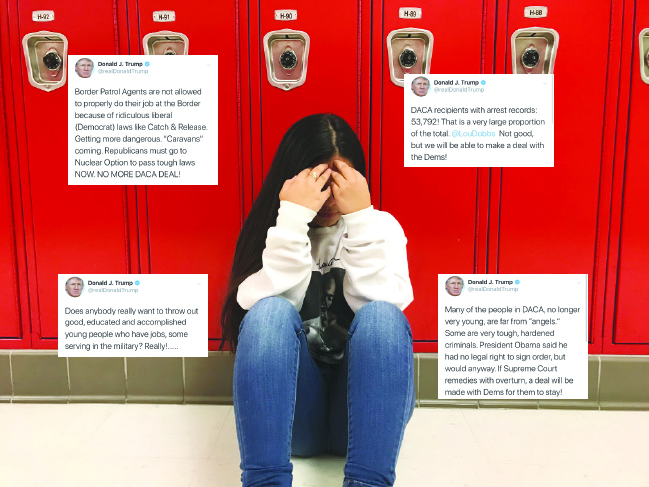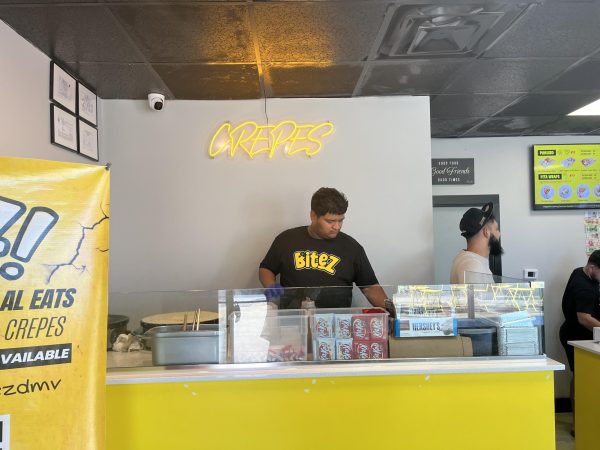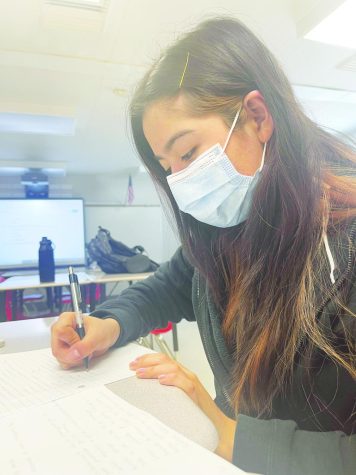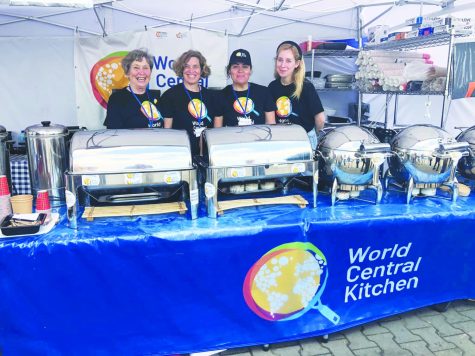WHAT HAPPENS NOW?
Over 700,000 live in fear as SCOTUS debates legality of DACA
Junior Sarah Lopez came to Springfield, VA with her mom and two older sisters in 2003, when she was just 5 months old.
A few months later, her father followed.
For most of her childhood, she and her family lived in fear of deportation. The A-Blast has changed her name to protect her identity.
“Typical everyday things scared us,” Lopez said. “Going to the doctor’s going to school, going to work. We weren’t safe anywhere.”
Some of that fear lifted in 2012, when President Barack Obama announced the creation of Deferred Action for Childhood Arrivals.
Known as DACA, this policy allowed for people who were brought to the U.S. as children in an unlawful manner to get temporary legal status, go to school, and obtain work permits.
Applicants needed to be in school and/or honorable discharged from the armed forces and needed to pass a background check.
Currently, DACA has placed over 700,000 people under protection from deportation.
As soon as the program was announced, Lopez’s parents filed applications for her and her two sisters.
“When DACA was announced, me and my family felt like we had a chance to make things work in America,” Lopez said. “But things have changed recently. It has all taken a turn for the worse.”
Lopez is certainly not alone, as of the 2018-2019 school year, 45% of AHS students are of Latino descent, many facing the same fear as Lopez.
When President Donald Trump began his campaign for the oval office in 2015, he made a promise to end DACA, claiming that the program was “illegal” and “unconstitutional,” even going as far as to say that he would rescind the program on his first day of office.
Now, it looks like he may have a chance at fulfilling this promise, as the Supreme Court began hearing arguments revolving around the legality of DACA last Tuesday.
In June 2017, the Department of Homeland Security announced that any expansions to the original DACA policy would be rescinded, but the original policy would stay intact and be under review.
Less than three months later, Attorney General Jeff Sessions announced that the program was to be repealed, calling DACA recipients ‘lawbreakers.’
Quickly enough, DACA recipients, often called DREAMers as a reference to the DREAM Act, a policy that would give DACA recipients a route to citizenship but was never passed, were put in a state of fear.
“There were no clear instructions on what to do,” Lopez said. “There are so many people whose whole livelihoods depended on DACA, and President Trump and his administration were taking it away with just a snap of their fingers.”
In his announcement, Sessions defended the repealment of DACA by saying that the existence of the program was taking away jobs from U.S. citizens, and that there was an increase in children arriving to the U.S. without parents, in hopes that they too would receive protection from DACA. He also claimed that a majority of law experts agree that DACA is unconstitutional.
“Those words were extremely hurtful, and only put more fear into people like me,” Lopez said.
Swiftly, fact-checkers proved all of these statements to be wrong and the general public condemned these words.
Protests were held in nearly every major city, including Washington, D.C.
Even some Republicans were aghast at the repealment of DACA.
Within days, state governments began to file lawsuits against President Trump and his administration.
The very next day, New York headed a lawsuit with 14 other states and Washington D.C. A few days later, President Trump was slapped by another lawsuit from California and four other states.
There was plenty of back and forth that culminated in three different federal district courts ruling that the Trump administration was to continue accepting DACA applications and that the program was not unconstitutional in early 2018.
“This gave us some hope,” Lopez said. “Someone cared about us, and they were willing to do something about.”
What seemed like a moment of peace for DREAMers ended quickly.
The Trump administration kept pushing for the Supreme Court to hear the case, which lead to the hearings last week.
Following the confirmation of Brett Kavanaugh last year, the Supreme Court now has a conservative majority.
This practically ensures that the hearings will conclude in the termination of DACA.
If the Supreme Court does conclude that DACA is unconstitutional, which it is likely to do, the result will be a gradual shut down of the program.
President Trump has stated on Twitter that he would work with the Democrats in Congress to figure out a way to “let them [DREAMers] stay.” However, past efforts have failed, so this one is likely to as well.
DACA is renewable every two years, so each recipient’s benefits have a different expiration date.
It seems like once the benefits expire, the recipient is likely to be deported.
This will lead to the separation of families and friends, and people having to leave the country that has been their home since childhood.
“Every day, I am scared that someone is going to come and take me and my family away,” Lopez said. “I don’t know anything except the U.S., and everything that I have here can be taken away from me in a second, and that is super scary.”
From an economic point of view, many businesses and schools are in fear of the termination of this program as well.
Because nearly all DACA recipients attend school and have jobs, they are also reaping the benefits of this program by making money.
In fact, the CEO of Apple Tim Cook filed a brief with the Supreme Court, asking for the continuance of DACA.
Locally, the possible repealment of DACA strikes fear in the hearts of people in the AHS community as well.
Fairfax County does not enforce civil federal immigration laws and promises to protect the rights of immigrants.
In fact, just seven months ago the county proposed a legal defense fund that would be used to help anyone entangled in a deportation case.
However, it should be noted that the county has not been designated as a sanctuary county.
This means that it must cooperate with any law enforcement agency, including ICE.
“It is sad to know that I love this place so much, but I am not safe here,” Lopez said. “It’s safer here than where my parents came from, of course, but being here means I risk being sent there.”
The D.C. metro area, which includes Fairfax County, is reported to be home to over 14,000 DACA recipients.
What happens to them once the Supreme Court gives its final decision in June 2020 remains unknown.
“I could end up being able to stay here. I could end up having to move to a different city or state. I could end up going back to Central America,” Lopez said. “I don’t know what will happen to me, my siblings, or my parents. How is that fair to a kid?”
*Sarah Lopez is not a real name, as the student wishes to remain anonymous.

Senior Suad Mohamed is currently the Co-Editor in Chief and this is her fourth year on staff. Last year, she was the In-Depth Editor. Besides The A-Blast,...












